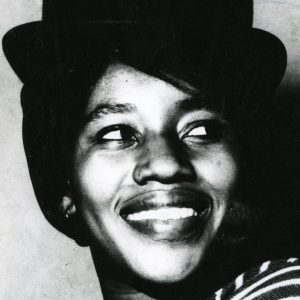Album Review | Inganekwane by Zoë Modiga
With her second album, a marvel that has been three years in the making, the singer-songwriter takes her place in a storytelling tradition in which black women are the vanguard.
Author:
8 July 2020

Midnight struck on 26 June 2020 and Zoë Modiga’s 16-track sophomore album was released on streaming platforms. Inganekwane, the Zulu word for “fairy tale” seemed so apt as listeners gathered online in a kind of communion characteristic of an ancient tradition of story time, where the matriarch of a family tells fantastical bedtime tales to children.
In keeping with the protocols of storytelling, in opening with Kwasukasukela and ending with Cos Cos Yaphela, in those early hours Modiga took her place in a tradition in which black women are the vanguard.
The album is three years in the making, following Modiga’s critically acclaimed debut Yellow: The Novel. Inganekwane is an artist’s sojourn with fellow artists who, as Modiga puts it, “were musicians who were also equally selfless with just how they gave themselves to my ideas and my concepts”. Among these fellow travellers is Nathan Smith, who played guitar during Modiga’s season on television reality show singing competition The Voice. Also, studio engineers Papi Direste and Oyama Songo, mixing engineers Carlos Bedoya and Marc Urselli, and mastering engineer Jose Blanco – all of them Grammy Award winners.
Healing and affirmation
There is the belief that when you tell yourself something repeatedly, you begin to believe it. Lengoma, featuring Urban Village lead vocalist Tubatsi Mpho Moloi, sets the tone for this idea: the healing quality of music, it’s affirming nature. The call-and-response structure of the chant allows listeners to participate in the declaration and celebration of wholeness. In repetition, the circular structure of the song provides an insistent affirmation. The power of the song is in its simplicity.
Following this track is Umdali, a song heavy in biblical reference. Here, listeners are introduced to the album’s motif. Modiga plays around with the concept that we are all created with our paths laid out and from a similar source. She creates in our minds an aural cradle of humankind. We have been sent on a mission, a mission that revolves around our worthiness as human beings. We are not only worthy of the healing space she creates in the world of this album, we also exist for a purpose carefully fashioned before we were born.
There is an otherworldliness to the arrangements. They are rooted in an inexplicable calm almost as though the listener’s soul is being lifted out of its body and taken on a journey through the consciousness of this higher being.
We are then taken through the affirming Intsha, an ode to youth who Modiga describes as having “always been part of watershed moments” across the world, be it in Paris in 1968, Soweto in 1976 or Black Lives Matter at present. The music locates itself in the traditions of maskandi and the influence of Busi Mhlongo announces itself here.
When the subject of comparisons comes up, Modiga responds: “Comparison has not always been flattering to me. I was not familiar with Mam’ Busi at all. The most I knew was her name. People likening me to her piqued my curiosity into what she contributed. She embodies all the things I wanted to learn.”
Taking up space and preserving being
Intsha is a resounding yes to taking up space even as we find ourselves at a point right now where so much is so wrong with the world, where even in the South African experience there are so many barriers in the way of young people. But Modiga doesn’t wish for this generation to abandon the way paved by those before us, invoking the spirit of the labour to preserve African modes of being, some of which are rooted in respect for each other’s humanness. Key selection is crucial to the effectiveness of the song’s messaging – and throughout the album.
The major key of Abantu speaks to the hopeful and affirmative DNA of the song. Modiga wants us to be certain of the arrival of positive change for black people. The sustained notes of the song, the stretches in the vamp, display Modiga’s beautiful texture, fluttering then building to a strong, authoritative timbre. She mellows it out in Intsha’s reprise, Sinenkani, where she makes room for catharsis. Her ad libbing creates a sense of release.
Uthando explores the idea of a “1 Corinthians 13 kind of love”, laying the foundation for the next song, Tata, which deals with the broken love between a father and daughter, where we can only find the words unsaid between the notes.

Here, Modiga treads the lower register of her range, with a thickened texture to her tone. Regarding this, she opens up about her voice not being in the best shape when recording this body of work. “It was so humbling because you are talking about someone who has won eisteddfods, whose first album was funded by winning singing competitions.”
There is something about this point in the album that feels like a shift in gear, displaying the splendour of a vocalist who doesn’t really need to be at her best technically to convey the feeling of a song. It’s quite easy to be moved by a stratospheric range. Together with the accompaniment she creates space for the things that are left unsaid, to forgive, to heal. It’s made possible by the inconvenience of this suddenly “imperfect” voice.
Keeping with fairy tales, Black Butterfly deals with the concept of flight, of taking up space by being certain that the sky is exactly where black people belong and that we ought never to apologise for getting the things we’ve earned. Connected to this is what Modiga refers to as the “responsibility of the flight”. Unembeza cautions us to be aware of our conscience, that we are accountable for our actions.
Listening to this work is to marvel at the versatility of Modiga’s voice, her elite skill.
Inspirations and icons
Various influences meet in Inganekwane. The artist reveals having dedicated time to immersing herself in the work of various African musicians, from Fatoumata Diawara to Khadja Nin, Salif Keita, Jabu Khanyile and Mhlongo. But these are not just generic reproductions. Modiga, together with bassist, composer and music space curator Banda Banda, co-produce a sonic identity that is unique to Modiga, making her an artist that is more than the influences she claims.
Beyond the affirming power of her lyricism is a careful arrangement of gorgeous music to accompany the messages. The ideas of spirituality and the possibility of flight to the highest of heights are translated in the instrumentation. You can zone out of the story told through the words and hear the message in the snap of the bass in Impilo at two minutes 17 seconds in, or in how the horns float up to a sustained state on the major fifth while Modiga sings, “Ngibonga impilo”, in appreciation of life.
Related article:
As much as Mhlongo may be the inspiration, even this icon has a source. All influences really lead back to the mother of them all, Miriam Makeba, who blazed a trail for South African artists from Letta Mbulu to Brenda Fassie and Mhlongo, all of whom have covered Makeba’s hits.
Modiga breathes newness into African Sunset, renaming it Ilanga Lishonile to signal the end of the story, slowing the song down and doing away with the impressionist-esque piano playing and adding a male voice courtesy of Banda Banda. This slowed-down rendition allows for an altered phrasing and thus a new appreciation for how the voice moves through the notes of the largely unchanged melody. The bass guitar takes on less of a percussive role compared with Makeba’s original, but nevertheless it monitors the pace and mood of this new rendition that will likely overtake the original. That’s left to Ire Bolaji and Samba Ndokh Mbaye on the drums and percussion, respectively.
Symbolically significant cattle
Cattle appear on the album cover, photographed by Tatenda Chidora, as well as the song Lishonile Ilanga. There is something about the use of cattle in this way that is symbolically significant throughout history. For instance, the earliest known composer and prophet Ntsikana and his spiritual awakening through his favourite cow. The other function of the imagery of the cow conjures the Cattle Killing prophecy of 1856-1857, in which young Nongqawuse foresees resurrection and wealth through the image of the cows. “The dead will rise,” proclaimed the teenage prophetess.
Black people have died many deaths because of colonialism and this album feels like the trumpet call of resurrection, renewal and restoration foreseen more than a century ago.

A link can be made between this work and what cattle mean to African people as signifiers of wealth and ownership of the means of production. “These are things that were somewhere in the back of my mind,” says Modiga, “inasmuch as that particular history had devastating effects in the years that led to the making of South Africa. The idea of cattle is an endearing story that starts with uGogo and staring at cattle, and my paternal grandmother laughing at me. The story of Nongqawuse was at the back of my mind and I am glad to be reminded of that.”
Storytelling as awakening
Isegazini takes us back to the motif, to the concept of being created with purpose. This could be read in two ways. In an interview with Bill Moyers, Toni Morrison says, “People say, ‘I didn’t ask to be born.’ I think we did and that’s why we’re here. We are here and we have to do something nurturing that we respect before we go.” It seems we are taken back to where life began, where human beings pray their lives into existence. The other reading is a person declaring to anyone who will listen why they deserve to operate in the realm of their purpose. Finally, there are the whispered notes that define Umlolozelo, a lullaby in which Modiga invites quiet reflection and soothes a spirit triggered by trauma.
Related article:
“Truth is heavy,” the singer says. “Umlolozelo is me giving the listener a hug.”
On the act of storytelling, Gcina Mhlophe says, “I personally tell stories in order to wake up stories in other people.” Through this work, Modiga has awakened a story in her listeners, diversely shifting and affecting its audience in ways that are characteristic of a fairy tale. It has created space for us to believe in healing, in the all encompassing nature of love and the possibility of flight.


